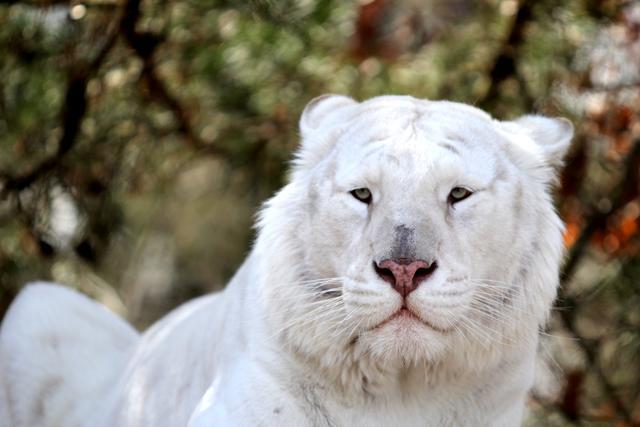Carolyn Hinshaw , a senior in fisheries and wildlife science and wildlife conservation, shares a close bond with animals.
Hinshaw began as a volunteer in her senior year in high school and worked her way up to be an animal keeper.
Her care for animals at the Conservators’ Center is immediately evident when watching Hinshaw at work.
“Pretty much from the time I started working here, I knew it was what I wanted to do,” she said.
The Conservator’s Center is a small, nonprofit organization that houses a very large collection of animals. Located in Mebane , the Center is a sanctuary for mistreated or unwanted animals. The center offers tours where visitors can get an intimate perspective on more than 20 different threatened species.
Tours take visitors mere feet from the cages, providing a view that would be impossible at a larger facility.
On Saturday, Hinshaw was attempting to administer an antibiotic to Thomas, one of the center’s 21 lions. Thomas had an infected ear that required drops. Hinshaw lured the massive cat over to the fence using a spray bottle of perfume with an interesting scent to hold his attention. She then reached through the links with the tiny bottle of medicine. Imploring Thomas to hold still, she navigated the dropper through his thick mane and somehow found his ear.
Hinshaw’s favorite animals to work with are the lions.
“I like them because they’re really social animals. They like to take care of their people, because they know we’re kind of weak.”
The social nature of lions, and the other animals, is on display throughout the center. One cage contains a mixed pride of tigers and lions. Calvin, a lion, is the unquestioned leader of this group, but he and the other lions in the mixed pride have learned some lessons from their tiger roommates. Lions usually avoid swimming, but those in the mixed pride enjoy a dip after seeing the water-loving tigers bathe in the pool.
The center is also home to a variety of smaller animals, including servals , lemurs, foxes and bobcats. Mandy Matson , a long-time volunteer at the center, generally works with the smaller species. Entering a building of raccoon-like kinkajous, her bond with these animals was apparent. The nocturnal kinkajous were very unhappy to be awoken from their daytime slumber by strangers, and alternated between hissing vehemently and looking to Matson for reassurance. She simply said, “These are my guys.”
Despite the relationships between the center’s residents and their caretakers, caution still must be exercised when interacting with the animals. All of the center’s enclosures have multiple gates that allow workers to move the animals for cage cleaning, feeding or routine maintenance. Matson explained the reason for the caution.
“Even if he [a lion] was just trying to play or check me out, I could really get hurt,” Matson said.
Every animal in the center is available for adoption. Adopters can schedule times to meet with their animal, but they aren’t allowed to physically interact with them. The close relationships developed between the adopter and animal is just one of the many intrinsic benefits of supporting the center.
Even with the liability involved at maintaining a facility full of wild animals, the mood around the center is relaxed and positive. The passion for animals of the employees and volunteers is tangible.
“You just get in here and fall in love with them,” a beaming Matson said.
The power and grace of exotic animals can only be truly appreciated from experiencing it up close. For $7, visitors can see these animals and all of the complex relationships at the Conservator’s Center.
Visit www.conservatorscenter.org for more information.








